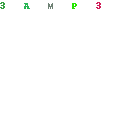The history of Christmas lights dates back to 17th century Germany when candles were fastened to the tree branches by wax or pins. However, the candles melted quickly and were a fire hazard. In 1882, just three years after Thomas Edison’s light bulb invention, Edward Johnson, an associate of Mr. Edison, first lit up a Christmas tree by eighty electric bulbs. The red white and the blue bulbs of 6/8 of an inch in diameter were hand wired and wound round the trees like the beads of a string for a beautiful, sparkling effect.
Still out of range for most American families to purchase, Edison’s Christmas tree lights did not immediately catch on. It would take decades for affordable lighting to become available to most Americans. However, just after President Grover Cleveland commissioned a lighted White House tree in 1895, members of “high society” started hosting Christmas Tree parties.
Smaller and less expensive battery-operated lighting strings were decorating the trees of those adventurous enough to do the wiring. In fact, an article in Popular Electricity Magazine had a piece for children, explaining how to light the family tree with battery-powered electric lights. The back pages had instructions on ordering the necessary wire, sockets and light bulbs.
In 1903, The General Electric Company offered pre-assembled lighting outfits called festoons. They consisted of eight green porcelain sockets; eight Edison miniature based colored glass lamps and a handy serve in plug. The cost of General Electric’s first offering of Christmas lights was $12.00 for a set of 24 lights, enough to light a medium sized table-top tree. This was considered extremely expensive in 1903, as the average wage for the time was a mere 22¢ per hour, which equaled a weekly paycheck of about $13.20. Since the cost of purchasing the lights was expensive, they could be rented for the whole Christmas season. Later several companies began offering lamp sets and in this way the Christmas lighting industry began.
So how do we transform this to make it a reminder of the birth of Jesus Christ?
Each day that you turn on the lights of Christmas, tell your children that Jesus came to be light in our darkness. Israel had a yearly celebration called Festival of Lights. It was a happy celebration time and the whole city was lit up. On the last day of the celebration, it was sad to see the lights go out. One year, at the moment the lights were put out, Jesus stepped from the shadows and pronounced, “I am the light of the world. He who follows Me shall not walk in darkness, but have the light of life. (John 8:12)
Then consider that the purpose of a follower of Jesus is to also be light in the world. “That you may become blameless and harmless, children of God without fault in the midst of a crooked and perverse generation, among whom you shine as lights in the world.” (Philippians 2:15 )
Pray this verse each night when you turn on your Christmas lights:
Lord, you have brought light to my life; my God, you light up my darkness. Psalm 18:28
